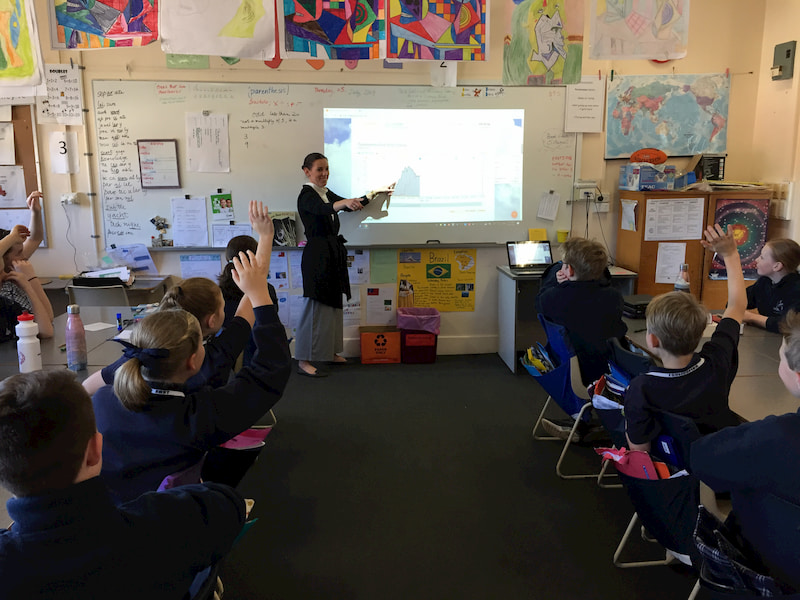Spotlight: Toowoomba East State School

We recently chatted with Amy McGaw, a Health Teacher and Sustainability Programs Co-ordinator at Toowoomba East State School, Queensland. To tell us about your school please email info@solarschools.net.
How did you first hear about the Solar Schools program?
Our school attends workshops at Amaroo Environmental Education Centre and we heard about the program through them.
When did your school become a Solar Schools School?
2010 – We joined the new program in January this year (2019) and now have access to Planet Watch also.
How would you describe your school?
Founded in 1887, Toowoomba East State School has had a long association with the city of Toowoomba. It is certainly one of the premier primary schools in the city, catering for approximately 830 students from prep to year six.
We have a proud tradition of providing quality state education, and excel in a number of academic, cultural and sporting areas, including a quality academic program, instrumental and choral music programs, a strong sporting program and other extra-curricular activities.
Toowoomba East State School has approximately 80 staff. The school has excellent facilities, including a well-equipped resource centre, heated swimming pool, multi-purpose hall, music block, three digital learning centres, two covered learning areas and a range of adventure playgrounds. The school has an active Parent and Citizens’ Association, as well as a Chaplaincy Committee, after school care program, uniform shop and tuckshop.
We are known for our high NAPLAN results, heritage listed buildings and well-mannered and behaved students.
How are Solar Schools values aligned with your school?
Throughout our Health units Prep – Year 6 students explore the concept of sustainable practice and the ways that they can contribute to the sustainability of the environment in their home, classroom and school. Using the Solas Schools resources and data is a great teaching tool to support these units.
The Planet Watch data and the staff at Solar Schools have been beneficial in implementing staff behaviour changes to combat energy waste. Staff then act as role models and show students the sustainable way to use energy.
How does the Solar Schools program help your team achieve education objectives?
- Our Health units align with the Australian Curriculum.
- We are a trial school for the ACES Program (Advancing Clean Energy Schools) where the QLD government is committed to a clean energy future.
- Sustainable practices within the school align with QLD’s new waste strategy and draft waste management and resource recovery strategy.
- Toowoomba is setting a benchmark for other schools to follow and make a difference.
How does the Solar Schools program help the students achieve energy/sustainability goals at the school & home?
We use the Planet Watch data to monitor usage. We set benchmarks on where we would like to be. We know when a lot of energy has been consumed and why.
Has Solar School helped the school reduce electricity usage and costs?
During the month of May, we reduced our electricity by $74.96 a DAY. Saving $2,248.80 for the month!!!! Not only that, think of the CO2 emission avoided. We did this just by turning off appliances that weren’t needed and changing our behaviours. At the beginning of the year, I conducted a Professional Deveolpment session and showed all of our staff some changes we could make throughout our day at school. I showed them some data from our school and compared it to others to show that we are a high energy using school. I showed them the impact we are having on the environment. I used statistics from the Solar Schools webpage.
What activities have your classes undertaken that are changing behaviours around energy?
- Reducing photocopying
- Using less paper
- Turning off lights in classrooms
- Turning off data projectors when not being used.
- Assigning a class to turn off all computers in labs at the end of the day instead of leaving them in sleep mode.
- Checking fridge seals and turning off fridges during school holidays.
- Turning off photocopies after school rather than leaving them in sleep mode.
- Installing sensor lights in high traffic areas such as staff room, toilets, photocopier rooms.
- Changing fluorescent lights to LED.
- Setting air conditions to 24-22 degrees.
- Closing windows and doors when the air cons are on.
- Explaining demand charges to staff and to try not put on everything at once.
- Using the internet less.
- Working with Ed QLD and NuGreen on how to reduce our demand charges and electricity bill and installing more solar panels.

